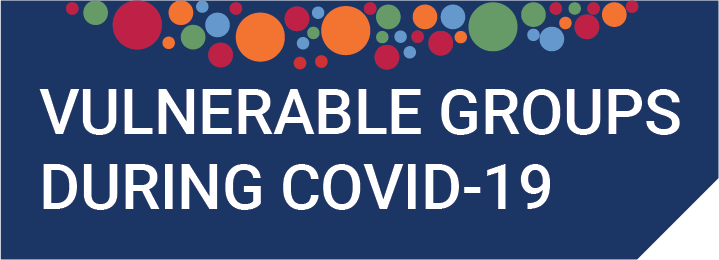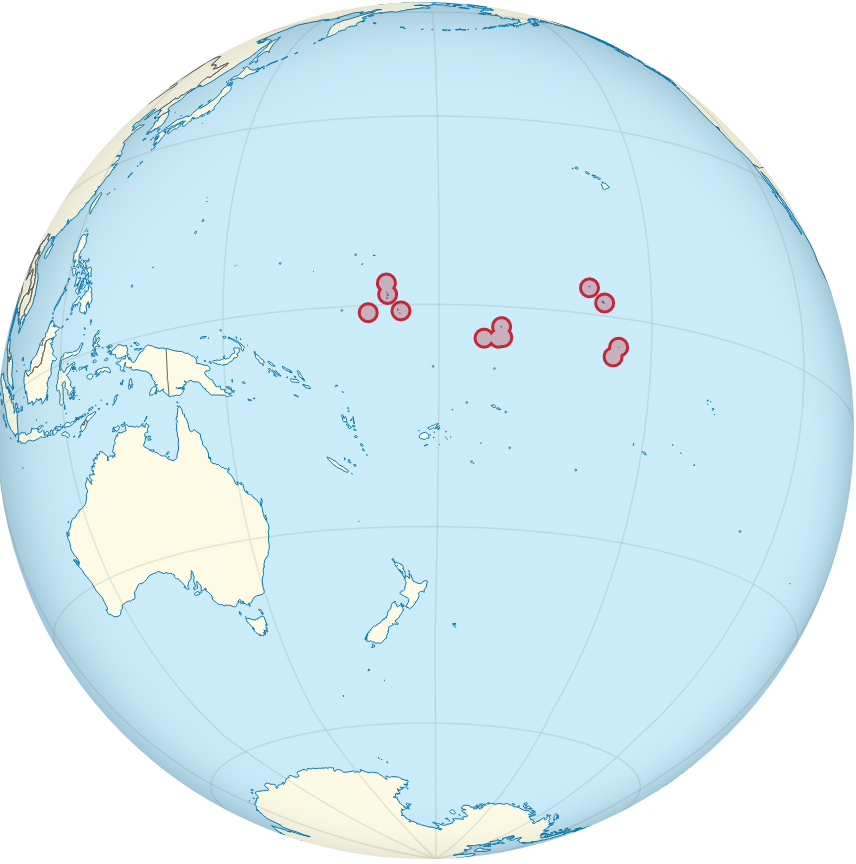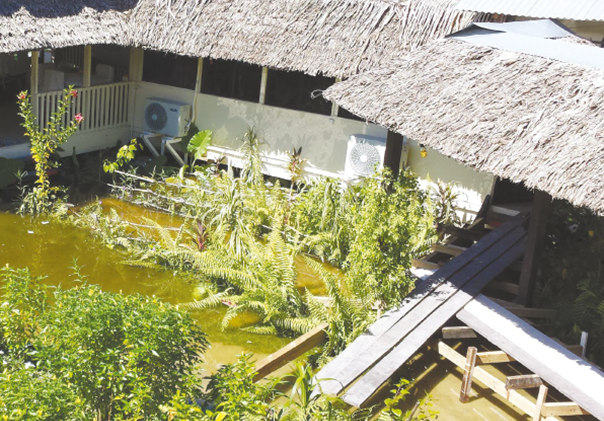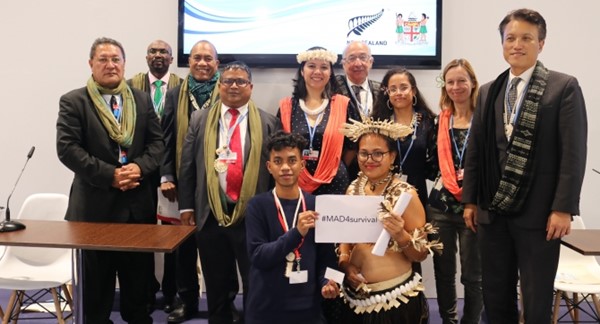 In this article I present my master thesis for the NOHA+ programme in International Humanitarian Action. My research covers three of the major challenges of the 21st century: immobility, climate change and the Covid-19 pandemic. The three phenomena are framed from a global crises’ perspective and they are enabling emergency measures while at the same time contributing to structural inequalities ‘Global South’ countries face.
In this article I present my master thesis for the NOHA+ programme in International Humanitarian Action. My research covers three of the major challenges of the 21st century: immobility, climate change and the Covid-19 pandemic. The three phenomena are framed from a global crises’ perspective and they are enabling emergency measures while at the same time contributing to structural inequalities ‘Global South’ countries face.
Climate change is predicted to become one of the most severe humanitarian crises in the current century and the rising occasions of environmental destruction and natural shocks cause people to adapt in context-dependent ways. These adaptations mostly imply a degradation of living quality especially affecting ‘Global South’ countries. However, these countries are not primarily responsible for anthropogenic climate change since the highest Carbon Dioxide (CO2) emissions are provoked by ‘Northern’ countries actively threatening the well-being states of more vulnerable communities (Myers, 2002).
The climate change-mobility-nexus discourse is momentarily accompanied by the Covid-19 pandemic. Temporarily, the pandemic emergency measures such as lockdowns and border closures leading to reduced travel and transport flows had a positive impact on the environment by reducing CO2 emissions. The countries which are mainly responsible for high magnitudes of movement and thereby higher virus contamination rates are countries from the ‘North’, while ‘Southern’ countries will be the most vulnerable to the restrictions. Nonetheless, the emergency measures worsen pre-existing social inequalities by threatening “human conditions of existence and well-being” (Hut et al., 2020) and the global challenges will be, once again, primarily experienced by poorer countries.
This fact intensifies the need to discuss systematic global injustice induced by both crises. The fundamental questions arising from this discussion do not only concern the unequal distribution of climatic disasters, but also the concomitant migration and international emergency policies during the global pandemic. The power relation between ‘Southern’ and ‘Northern’ actors is highly influential to the concept of immobility since “it is not simply a question of unequal distribution, that some people move more than others, and that some have more control than others. It is that the mobility and control of some groups can actively weaken other people” (Massey, 1991). My key research objective is to contribute to research efforts in order to attain a broadened perspective around the intersection of immobility and well-being. I hope this will make affected communities more visible for future research and intervention programming in the sector of humanitarian aid and development.
The case of Kiribati
To follow my aspiration, I had to find a context which is prone to natural disasters, socio-economic impacts of the pandemic and displays immobility as a main adaptation strategy. Therefore, I chose Kiribati as the single case to be evaluated. The method I chose is a comparative approach of relevant online evidence and I analysed the findings with help of a self-composed model I will present at a later point in this article. Due to the pandemic situation, I was unfortunately not able to conduct semi-structured interviews with local humanitarian actors working in Kiribati as was planned beforehand.
 The small island state Kiribati is among the most vulnerable places globally to climate change effects which severely impact the communities’ state of well-being. It is situated in the Pacific Ocean and composed of 32 atolls and one coral island. Its territory has a total land area of 811km2 with a population size of about 118.000 inhabitants, while half of the population live on the capital atoll Tarawa which, therefore, suffers from overcrowding. In general, the Kiribati islands are especially prone to sea-level rise, coastal erosion, temperature changes and less predictable rainfall variability which influence particularly the access to freshwater, agricultural production, and the overall living environment for local communities (United Nations Pacific Strategy (UNPS), 2017).
The small island state Kiribati is among the most vulnerable places globally to climate change effects which severely impact the communities’ state of well-being. It is situated in the Pacific Ocean and composed of 32 atolls and one coral island. Its territory has a total land area of 811km2 with a population size of about 118.000 inhabitants, while half of the population live on the capital atoll Tarawa which, therefore, suffers from overcrowding. In general, the Kiribati islands are especially prone to sea-level rise, coastal erosion, temperature changes and less predictable rainfall variability which influence particularly the access to freshwater, agricultural production, and the overall living environment for local communities (United Nations Pacific Strategy (UNPS), 2017).
In the same condition, the socio-economic risks of the pandemic are threatening the weakened context. Even though the virus did not reach the country yet, Kiribati is suffering from the indirect effects of the forcibly imposed immobility state. To give an example, a recent study (Havice, Marschke, and Vandergeest, 2020) focusses on global impacts of pandemic-induced immobility on the seafood industry and emerging negative effects as vessels were detected as sources of high Covid-19 contamination. Many ports started restricting and monitoring landings rigorously which disturbed global supply-chains by increasing costs for vessel owners and exaggerating time investments for the workers. On the one hand, this reduces revenues from one of Kiribati’s biggest economic sectors because the fishing industry makes up about 6% of the local GDP (gross domestic product). On the other hand, since Kiribati is highly dependent on imports, e.g. due to long-term effects of natural disasters such as agricultural degradation and soil salination, the expected import dropouts by the Covid-19 pandemic are worsening the issue of food insecurity in Kiribati (Food and Agriculture Organization, 2020).
What exactly is immobility?
From an academic perspective, in cases when disasters deteriorate ecosystems, mobility in form of migration is expected to contribute to more sustainable development by benefitting the communities’ resilience process. Though, the mobility can transcend from an initial sustainability into a direction of abandonment as soon as the threshold of dangerous natural shocks is exceeded (Barnett and Adger, 2003). When the capacities needed for migrating are missing some households must stay in their homes even if that means that they are exposed to higher risks and increasing vulnerability (involuntary immobility). Meanwhile, other community members want to stay in their homes since their decision-making processes follow a cultural shaped logic and their origins have high cultural and traditional values (voluntary immobility) (Foresight, 2011). In most cases, the aspiration to stay is based on spiritual narratives, a deeply rooted place attachment to the land and the feeling of social belonging.
For my research, I defined immobility according to Schewel definition “as continuity in an individual’s place of residence over a period of time [which] is never absolute because all people move to some degree or another in their everyday lives; rather, it is always relative to spatial and temporal frames” (Schewel, 2019). How I interpreted it, it includes internal mobility behaviour if it is for self-preservation reasons and with the intention to secure future well-being. Hereby, the immobility aspirations cover more than the traditional mobility push and pull factors and it is essential to understand the concept’s framing to acknowledge its various meanings.
While there is currently a large body of scientific literature about mobility imposed by external threats, there is little research about immobility and its implications. Consequently, vulnerable households which consider staying in disaster-prone areas are most often illustrated as irrational acting from a ‘privileged’ and Western perspective. As a result, some people taking the decision to stay immobile are intentionally excluded from assistance programs putting them in an additional emergency (Zickgraf 2018). Therefore, my research aims to include a spectrum of narratives by dissociating mobility (migration) from immobility (non-migration) and making the latter more visible for future research and intervention programming.
How is immobility linked to climate change in the case of Kiribati?
 Due to Kiribati’s low-lying coastal zones, the island groups are expected to be uninhabitable by 2050. Even though the complete disappearance of a state has never occurred before, the risk that the country will vanish below sea level is strongly debated. The IPCC (Intergovernmental Panel on Climate Change, 2007) estimated that sea-level rise can be accounted for approx. 20-60 cm, but, unfortunately, the average height on the Kiribati islands is only under 2 meters. Therefore, communities will have no opportunity to move to higher grounds within their territory and the islands will not provide the necessary basis of existence. A prevailing example is that only half of the i-Kiribati have access to clean water. Under consideration of drastically increasing natural shocks, access to freshwater is expected to decline by an additional 50% leaving the locals in a place dependent on assistance. In the long-term, international mobility might be the last resort for local communities (Barnett and Adger, 2003). However, if climate change is the main driver of mobility and the i-Kiribati will aspire to move to other countries, currently, there is no legal international protection status for ‘environmental refugees.’ (Gemenne, 2015). But besides that, the missing legal framework is not the only international mobility obstacle. The ones involuntary remaining in Kiribati are expected to be “64% of i-Kiribati adults aged 20-44 years (61,000 people)” by 2030 (Curtain and Dornan, 2019), mostly lacking the necessary financial capital to take the step of emigration.
Due to Kiribati’s low-lying coastal zones, the island groups are expected to be uninhabitable by 2050. Even though the complete disappearance of a state has never occurred before, the risk that the country will vanish below sea level is strongly debated. The IPCC (Intergovernmental Panel on Climate Change, 2007) estimated that sea-level rise can be accounted for approx. 20-60 cm, but, unfortunately, the average height on the Kiribati islands is only under 2 meters. Therefore, communities will have no opportunity to move to higher grounds within their territory and the islands will not provide the necessary basis of existence. A prevailing example is that only half of the i-Kiribati have access to clean water. Under consideration of drastically increasing natural shocks, access to freshwater is expected to decline by an additional 50% leaving the locals in a place dependent on assistance. In the long-term, international mobility might be the last resort for local communities (Barnett and Adger, 2003). However, if climate change is the main driver of mobility and the i-Kiribati will aspire to move to other countries, currently, there is no legal international protection status for ‘environmental refugees.’ (Gemenne, 2015). But besides that, the missing legal framework is not the only international mobility obstacle. The ones involuntary remaining in Kiribati are expected to be “64% of i-Kiribati adults aged 20-44 years (61,000 people)” by 2030 (Curtain and Dornan, 2019), mostly lacking the necessary financial capital to take the step of emigration.
However, even though one out of four households perceives mobility as an adequate adaptation strategy, the proportion taking the step is in reality way smaller and the country’s adaption capacities and social resilience are actively counteracting.

Voluntary immobility is the most preferred adaptation strategy to climate change and illustrates lived experiences of communities as the statement of Ms. Tabitha Awerika, a youth and future leader from Kiribati portrays: “I will not leave the lands of my ancestors! I will not abandon my motherland! I refuse to leave the only place I call home!” (South Pacific Regional Environmental Programme (SPREP), 2019) The local communities see themselves as capable of building resilient futures under the premise to be self-determined despite regular disasters consequences and are supported by current political efforts to stay in situ. What becomes apparent hereby is that the voluntary immobility decision as a response to natural shocks must be clearly distinguished from involuntary immobility processes.
How is immobility linked to Covid-19 in the case of Kiribati?
As countries try to prevent further contamination with the quickly spreading virus while trying to ensure the system’s functioning and structure compared to the pre-pandemic state, actively prohibiting mobility has turned out to be a popular method of containment. Consequently, the global emergency measures are based on immobilization as the key strategy (Havice, Marschke, and Vandergeest, 2020).
Even though the virus did not reach Kiribati yet, the small island state is suffering from the indirect effects of the international emergency measures. In Kiribati, strict emergency measures such as closures of school or non-essential businesses, and regulation of public transport services were set to the period from March to April 2020. Though, currently, the country is operating on “Level 1: Business as usual” meaning there are no local lockdown restrictions, meanwhile international flights and border closures remained restricted (Government of Kiribati, 2020). Since Kiribati is an island state of isolated nature, its geography is advantageous in preventing an initial outbreak. Contrary, its location might turn out as a weakness to fight the virus if it reaches the atolls. For example, by establishing strict international emergency measures and border closures the delivery of medical equipment will most likely get delayed and complicated (UN Pacific, 2020).
Based on the weak public health systems, the communities are facing a decreasing feeling of security. They have mixed feelings about the impacts and capacities to cope with the structural shocks induced by Covid-19, although, most prefer the emergency measures-imposed immobilization and the i-Kiribati call the government for even stricter regulations of international mobility (Aualiitia, 2020). In the unfortunate case that the virus reaches Kiribati, public health services will be rapidly overburdened and the more isolated communities as well as patients with other health issues than Covid-19 will be excluded from receiving health services (Greenaway, Hargreaves, Barkati, Coyle, Gobbi, Veizis, and Douglas, 2020). Though, momentarily, the expected long-term externalities remain unknown and it is unimaginable how resilience processes will look once the risks of the pandemic significantly decrease. The only certainty is that considering the forcibly reduced travel, supply transport, and labor migration the i-Kiribati will suffer from economic and livelihood insecurities which are burdensome to their well-being. Therefore, the reinforcement of assistance programs and protection strategies is more relevant and topical than ever.
How is well-being defined and conceptualized?
 To conceptualize the adaptation of vulnerable communities to the before described ‘South-North’ power disparities and to research about Kiribati’s social counteraction to both crises, I decided to analyse the climate change-induced and pandemic-imposed immobility impacts with help of the well-being concept.
To conceptualize the adaptation of vulnerable communities to the before described ‘South-North’ power disparities and to research about Kiribati’s social counteraction to both crises, I decided to analyse the climate change-induced and pandemic-imposed immobility impacts with help of the well-being concept.
Well-being is a term widely used in discussions about wealth distributions and sustainable development, yet, there is no consensus about a generally applicable definition, and it is considered as an ‘umbrella-term’ (Gough, McGregor, and Camfield, 2006). Though, well-being should be considered definite from other notations describing wealth, healthiness, or social cohesion. For instance, health is described as a separate concept in the Sustainable Development Goal 3: “Good Health and Wellbeing” symbolizing that well-being is more than just a subjective condition. To see well-being rather as a social concept of life quality with emphasis on relational processes, than as an individualist aspect is supported by other studies as well (Armitage, Béné, Charles, Johnson, and Allison, 2012).
Due to the lack of a mutually accepted definition, I self-composed a model of community well-being based on relevant frameworks developed by researchers in the field. The model follows a socio-ecological perspective which defines community well-being as the state where needs are met (material dimension), a satisfying way of life is reached (subjective dimension), and processes of community commitment are integrated (relational dimension) (White 2010). Hereby, I defined that the array of material, relational, and subjective dimensions does not include any hierarchy and all of them are equally important for overall well-being. Precisely because large parts of the literature agree, I consider well-being as the outcome of a dynamic resilience process. Thereby, the resilience is shaped by capacities of a system to adapt to external and dynamic changes or even transform into a new system, whereby the degree of communities’ self-determination depends on various capital units (e.g. financial capital) (McCrea, Walton, and Leonard, 2014). The capital categories play an important role in the local decision-making processes. For instance, when natural shocks cause changes in form of ecosystem deteriorations the population might suffer from food insecurities. At the same time, the natural changes put restraints on agricultural productions and fishing practises and therefore households lack financial capital. These issues can be transferred to pandemic-imposed immobility as well. When considering the current disruptions of global supply chains, it gets obvious that geographically isolated communities will suffer from a lack of limited imports. Therefore, the pandemic is decreasing working opportunities while increasing import prices. Although, mobility aspirations due to a lack of food are rising the local communities are restrained from moving because they do not have the financial capacities to mobilize ascribing both concepts: climate change-induced and pandemic-imposed immobility.
What is the relation of externally induced immobility and well-being?
Even though climate change and the pandemic are expected to increase unregulated and irregular mobility flows on a global scale, the ones remaining in situ will be at higher risks of violence, a weakened labour market, and loss of remittances (McAdam, 2020). These circumstances have severe effects on local lives which can be reproduced with the concept of community well-being.
As I identified in my comparative case study approach voluntarily chosen or forcibly imposed immobility circumstances influence the local resilience processes and thereby the communities’ well-being state. In that sense, what appears to be one main aspect in both crises are the choices the communities are left with to shape their future, meaning the degree of self-determination. With a focus on the situational choices the communities have, the crises must be understood through the relational lens of cultural, social, political, and especially human capital (Winterton, Chambers, Farmer, and Monus, 2014). I assume that while climate change indicates the need to mobilize for most i-Kiribati, although they aspire to stay in their homes, the prevailing pandemic imposes the need to stay immobile, although communities might prefer to leave the islands due to livelihood security reasons in the long-term.
What can be concluded is that vulnerable states like Kiribati are disproportionately affected by the climate crisis and their well-being state is immensely harmed by the pandemic and its accompanying emergency measures. Pre-existing vulnerabilities of structural inequities in combination with the impacts of the virus are decreasing the capital units identified in the socio-economic model of community well-being. Hence, the implications of both crises are weakening the unity of dimensions that compose community well-being.
Why is the topic relevant to the humanitarian and development sector?
Especially approaches and interventions tailored at resilience, disaster risk reduction, and adaptation are perceived as the main contributors to improved well-being by the Kiribati communities and enable the long-term outcome of immobility with dignity. Therefore, agents aiming to assist the i-Kiribati should enhance approaches of (in)voluntary immobility.
On a global level, the simplifying assumption of immobility as a ‘stay’ and mobility as a ‘go’ do not meet the complex mixture of decision-making processes. Most often foreign actors assume that leaving is the only feasible adaptation to external climatic shocks and displays how immobile communities are classified as irrationally adapting which gives moral arguments for stigmatization to ‘Global North’ countries. This imposes threats on the communities by (intentionally) excluding them from programs in cases they refuse to leave their land voluntarily. The separation of subjective desires to move, meaning the aspiration to migrate respectively to stay in place, is problematic since the perception of environmental risk from a migration theory perspective most likely differs from local cognitions about immobility aspirations (Zickgraf, 2018).
The same goes for pandemic risks assumed from a ‘Northern’ perspective. My assumption is that the pandemic is increasing the risk of involuntary immobility alongside restricted mobility while aspirations of mobility increase due to rising insecurities and a loss of self-determination. Policies presuming a privileged perspective of adaptation capacities (e.g. that mobility is the only reasonable response to climate change, or immobility is the only feasible response to the pandemic) can unintentionally increase (in)voluntarily immobility, and programs might forcibly displace voluntary immobile communities or forcibly isolate voluntary mobile ones. Therefore, humanitarian and development agents should integrate ethical considerations for (in)voluntary immobility into their interventions to adequately protect and assist the Kiribati communities.
I chose the topic because I feel confident that the research will contribute to intersectional knowledge of the concept of well-being to identify obstacles and limitations imposed by climate change and the Covid-19 pandemic. By elucidating the linkages between externally imposed immobility, emerging risks as well as the opportunity of assistance, the thesis will further benefit the understanding of needs in Kiribati. I hope that the research findings will contribute to current scientific efforts to attain a broadened perspective around the intersection of immobility and well-being to make the affected communities more visible. Furthermore, I hope that the research outcomes of recommendations to the humanitarian and development sector can be used in the unfortunate case the Covid-19 virus reaches Kiribati’s shores and might guide intervention strategies to relieve the affected communities.
References
White, S., 2010. Analysing wellbeing: a framework for development practice. Development in Practice, [e-journal] 20(2), pp. 158-172.
Zickgraf, C., 2018. Immobility. Routledge Handbook of Environmental Displacement and Migration, New York: Routledge: pp.71-84.
SUPPORT DDRN SCIENCE JOURNALISM. DONATE DKK 20 OR MORE (APPLICABLE IN DENMARK ONLY)
(APPLICABLE IN DENMARK ONLY)
| Elena Valentina Mante is a Master student in International Humanitarian Action, Uppsala University, and DDRN University Intern |


